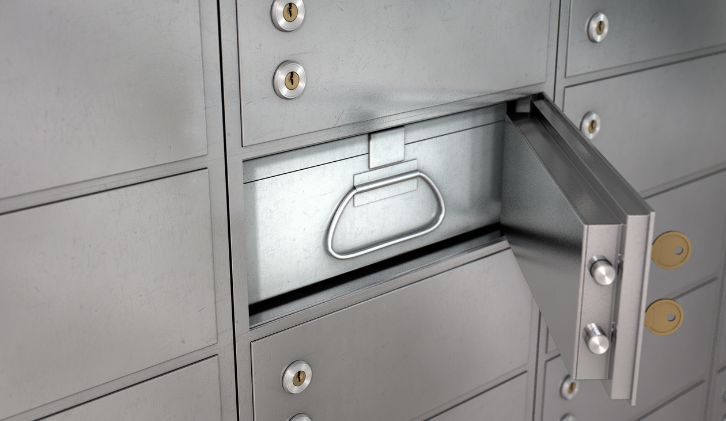Embedded Deposits
This blog looks at embedded deposits and how non-bank financial services providers are meeting the demand of their customer base.
Return to blog posts
Astonishingly, customer-centricity – an approach to doing business that focuses on providing a positive customer experience at the point of sale to drive profit and gain competitive advantage – has traditionally been an afterthought when delivering financial interactions. This short-sighted outlook left consumers resigned to their fate: to accept the disconnect between themselves and the company they’re doing business with; a gap that’s bridged by a third-party bank they are redirected to, creating an extra layer of friction.
This clunky process is increasingly unacceptable in the modern financial services landscape, where tradition has been replaced by innovation – and customer-centricity is a prerequisite. Embedded finance has disrupted the involvement of third parties through the disintermediation of financial interactions. This seamless integration of financial services by non-financial companies into their infrastructure is not limited to streamlining the payments process; other core interactions have been enhanced by embedding them behind these organisations’ apps and websites, including bank accounts – known as embedded deposits or embedded banking.
Traditional banking
Customer retention has never been a huge concern for traditional high-street banks – until now. Their general model is simple and effective: get someone to create an account when they’re young and assume they will bank with them for life because the hassle of changing to another similar high-street institution isn’t worth it.
With their choice restricted to a few brick-and-mortar providers that held a monopoly over the banking space – and offered the same services under different brands – consumers’ access to financial services was limited. Since the global financial crisis of 2008, however, the tide has turned amid the emergence of a broad set of tech-driven financial companies (fintechs). This new breed of provider aims to fundamentally address outdated financial services by offering access to innovation that supersedes the traditional methods used by incumbent banks – a trend that has been accelerated by the pandemic after consumers’ reliance on online functionality increased profoundly.
The conventional banking infrastructures flaws have been amplified in the face of this fintech revolution: slow in undertaking digital transformation, legacy infrastructure that lacks agility, strict regulatory standards, poor customer service, and the emergence of disruptive banking models.
Throw in the odd scandal – notably Payment Protection Insurance (PPI) mis-selling – that’s dented the public’s faith in them, and the banks’ grip on the industry has been prized loose. Take TSB for example, which in November 2021 announced that it was shutting 70 bank branches across the UK the following year as more customers switch to online.
Embedded deposits
The emergence of disruptive banking models has paved the way for embedded deposits to reshape the banking landscape: the process of incorporating specific banking tools – such as debit cards and checking accounts – into non-financial companies’ products or software, forming part of a larger bundle of services. When banking is embedded into a non-bank environment, it streamlines the customer journey while building more secure, fluid experiences into the tools they already use, increasing retention. By bringing banking to the customer, it creates simple, linear journeys that can be completed without opening a banking app or website.
Examples of popular embedded deposit experiences that are helping to drive a new era of flexible banking include:
- Shopify: The Canadian multinational e-commerce company’s banking feature aims to encourage small business owners to create a separate bank account for their company, rather than use their personal checking and savings accounts or set up a business account with their bank.
- Worldpay & FIS: The British/American payment processing company and technology provider makes it easy for vendors’ customers to pay for products online using their digital or mobile wallet of choice – essentially a new breed of agile bank accounts – helping drive conversions, accelerate checkout, and boost revenue.
- Starbucks: The Starbucks app offers deposit and credit products provided by investment bank and financial services holding company JPMorgan Chase, allowing customers to store cash and earn rewards for in-store purchases. In the US, a quarter of store transactions now occur via the app, with the retailer holding as much cash in its app and on its cards as some banks hold in deposits.
While fintechs still dominate the conversation, banks are starting to engage in the embedded banking space. Once considered upstarts in this previously rigid sector, the banks are viewing fintechs as potential co-collaborators to help establish their own digital footprints – commonly known as banking-as-a-service (BaaS). For banks, this can open the door to new revenue streams and expansion into unbanked customer segments. But there is still a long way to go for these traditional players: according to the 2021 Economist Impact report, a little over a quarter (27%) of banks and credit unions surveyed believe their organisation has the necessary technology tools – “to a great or large extent” – to create new digital products and services internally or externally.
Embedded deposits have empowered small businesses to take control of their banking. The monopoly once held by a handful of institutions in the banking space has been broken by the choice and convenience that’s inherent to fintechs. No longer an afterthought, customer-centricity is now a cornerstone of this streamlined approach to banking.
The future of embedded deposits
According to recent research by Finastra, embedded bank accounts and payment cards are poised for 30% growth by 2024. This trend is echoed by Bain Capital research which estimates that by 2021, US consumers and businesses spent $3.60 trillion on their debit cards and $3.55 trillion
on their credit cards – with 3% and 4% of these transactions for debit cards and less than 1% for
credit cards, conducted using embedded banking services. By 2026, Bain Capital predicts that the nonfinancial services market penetration for debit cards could increase fivefold to around 15%.
What’s next
Check out our blog on embedded lending (our speciality) and how it has changed how businesses and consumers can obtain more flexible finance options that traditional banks and lenders have been unable to provide.
Get in Touch
If you want to learn more about partnering with Liberis, feel free to get in touch.

























